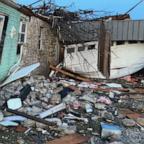Shuttle Endeavour Set to Lift Off with Japanese Lab
Shuttle will blast off early Tuesday for the longest mission ever attempted.
March 10, 2008 — -- The U.S. space shuttle Endeavour will blast off from its Florida home port Tuesday to deliver the first part of a huge Japanese laboratory to the International Space Station.
In addition to a storage and equipment module for Japan's double-decker bus-sized space lab, the main part of which will be hoisted to space in late May, Endeavour will carry a Canadian two-armed robotic system.
Endeavour, which flew its first mission in 1992 and is the newest of NASA's three remaining space shuttles, is scheduled to lift off at 2:28 a.m. EDT from its seaside launch pad and spend 16 days in orbit -- 12 of them at the space station.
That will be the longest planned visit to date by a shuttle to the orbital outpost, a $100 billion project that has become truly multinational this year with last month's installation of Europe's first permanent space lab and now Japan's.
The final section of the $2.4 billion Japanese lab called Kibo, a Japanese word for "hope," will be launched into space next year.
Space around the station will be more crowded than usual during Endeavour's mission. Europe's first cargo ship, an unmanned Automated Transfer Vehicle called Jules Verne, was launched from French Guiana on Saturday night and will be hovering near the station during the shuttle's visit, waiting for its turn to berth.
NASA will begin fueling Endeavour's 15-story-tall external fuel tank with 500,000 gallons of supercold liquid hydrogen and liquid oxygen roughly eight hours before Tuesday's launch.
The fuel will feed Endeavour's three main engines, which, together with two solid rocket boosters that will be jettisoned on the way up, will take the shuttle to a speed of more than 17,000 mph by the time it reaches orbit.
Endeavour's astronauts plan five spacewalks during their 12 days at the station. Two days will be dedicated to constructing a robotic pair of hands for the station's crane.
The Canadian addition, called Dextre, spans 30 feet from the tip of one arm to the other and will be able to install and service components as small as a phone book or as large as a phone booth.
Astronauts also plan to test on a space walk a heat shield repair technique designed after the 2003 Columbia accident.
Debris damaged Columbia's wing at launch, causing the ship to break up during its fiery descent through the atmosphere for landing. All seven astronauts aboard were killed.
The experimental repair technique could prove useful during a planned maintenance flight this year to the Hubble Space Telescope, when the space station will not be within reach as a refuge should the shuttle be too damaged to return to Earth.
The United States and Russia lead the 15-nation space station partnership, which includes Canada, Japan and 11 members of the European Space Agency.
NASA has two years to finish constructing the station before the space shuttle fleet is retired.




